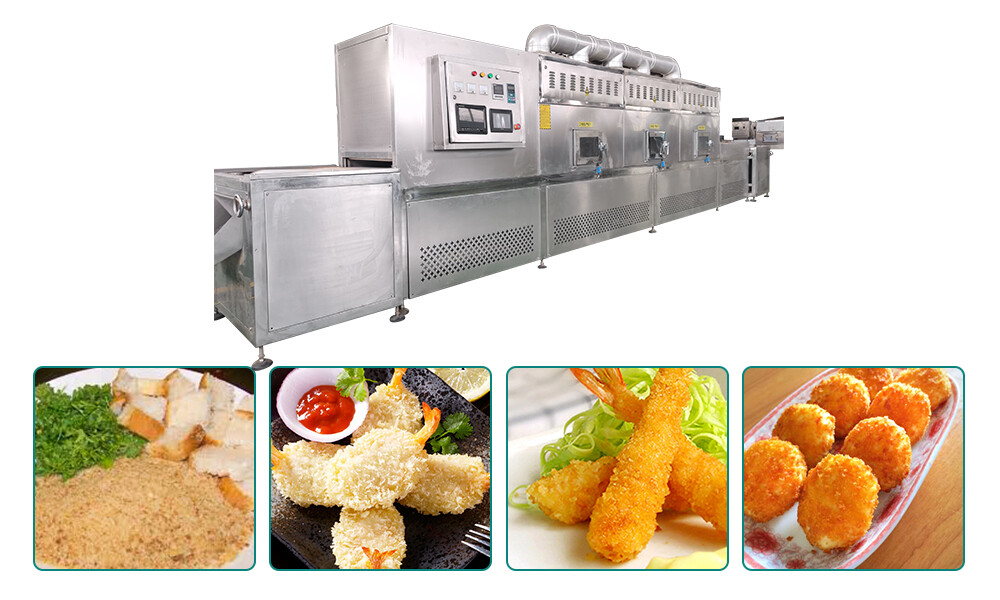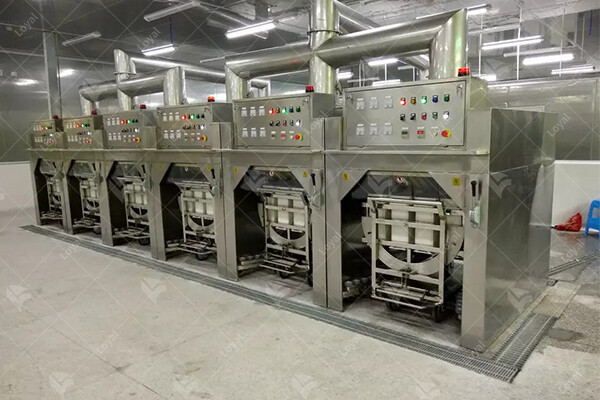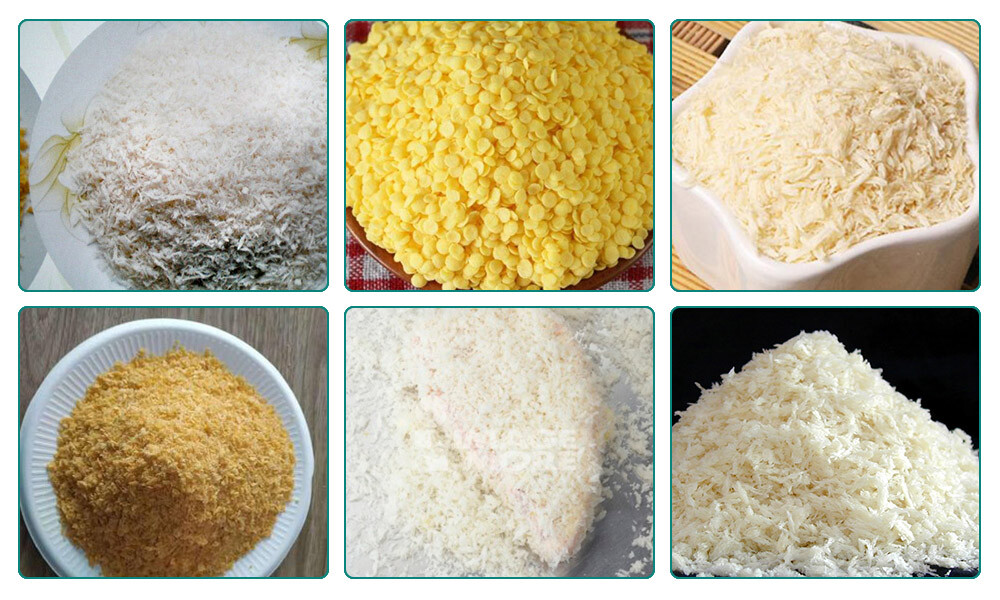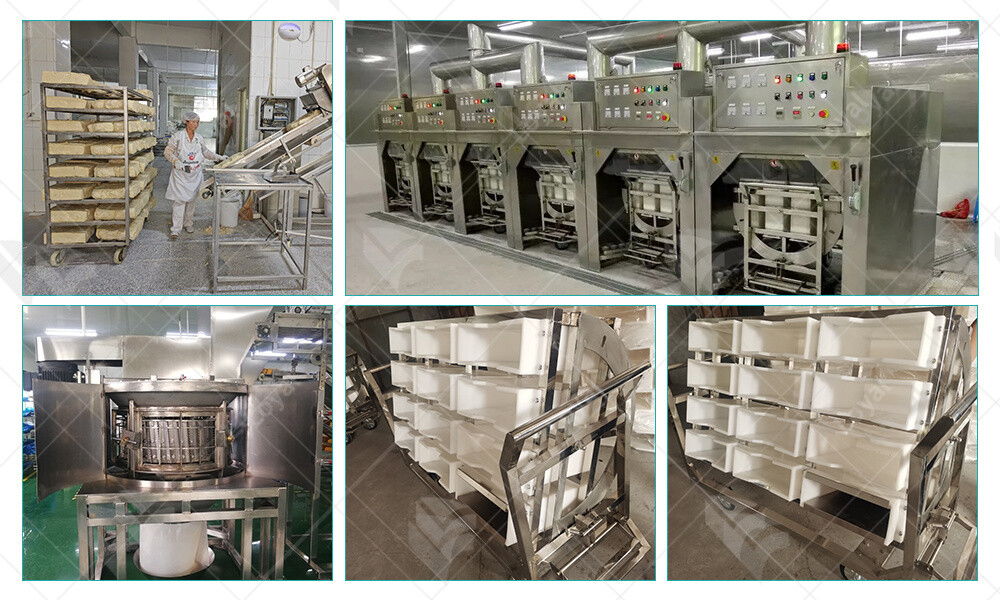Everything you Need to Know About crumb machine
Introduction to Crumb Machines
Crumb machines are pivotal in the food processing industry, serving a crucial role in various stages of food production. These machines are designed to effectively and efficiently break down bread, cookies, crackers, and other baked goods into fine crumbs. Their versatility makes them indispensable in numerous food processing facilities worldwide.
Crumb machines are equipped with advanced mechanisms that enable them to handle large volumes of baked goods swiftly and precisely. These machines come in various types, ranging from manual to fully automated models, catering to the diverse needs of different food processing operations.
The primary function of a crumb machine is to reduce baked goods into crumbs of uniform size and texture. This process is essential for various applications in the food industry, such as coating for fried foods, toppings for desserts, or ingredients for stuffing mixtures.
The versatility of crumb machines extends beyond traditional bakery products. They are also utilized in processing other food items like nuts, seeds, and even certain types of fruits and vegetables. This adaptability underscores the importance of crumb machines in modern food processing operations.
In conclusion, crumb machines play a vital role in the food industry by efficiently breaking down baked goods into crumbs for a wide range of applications. Their versatility, efficiency, and precision make them indispensable tools in food processing facilities around the world.

Types of Crumb Machines
Type | Description |
Vibratory | Uses vibrations to separate crumbs from larger food particles. |
Blade | Utilizes sharp blades to cut and separate crumbs from baked goods. |
Air Classifier | Employs air streams to separate crumbs based on density and size. |
Roller | Rolls dough or baked goods over a surface to create uniform crumbs. |
Hammer Mill | Utilizes high-speed rotating hammers to pulverize baked goods into crumbs. |
Disk | Rotating disks shred baked goods into crumbs. |
Pulverizer | Grinds baked goods into fine crumbs using high-speed rotating blades. |
Rotary Drum | Tumbles baked goods in a drum to break them into smaller pieces and crumbs. |
Centrifugal | Uses centrifugal force to separate crumbs from larger food particles. |
Bladeless | Employs innovative methods such as ultrasound or laser to create crumbs without traditional blades. |

Working Mechanism of Crumb Machines
Firstly, crumb machines are equipped with specialized blades or rollers designed to break down larger food items into smaller, uniform crumbs. These blades or rollers exert controlled pressure on the food material, effectively pulverizing it into desired sizes. The mechanism ensures consistent results, crucial for maintaining product quality in food processing operations.
Secondly, crumb machines often incorporate sieving or filtering mechanisms to separate the desired crumbs from unwanted debris or larger particles. This process enhances the purity and uniformity of the final product, meeting stringent quality standards in the food industry. The sieving mechanism may employ vibrating screens or mesh filters to efficiently separate the crumbs from other materials.
Furthermore, many crumb machines utilize advanced automation technology to streamline their operations and enhance productivity. Automated feeding systems ensure a steady supply of raw materials to the machine, optimizing throughput and minimizing downtime. Additionally, integrated sensors and monitoring systems enable real-time feedback, allowing operators to make timely adjustments and maintain optimal performance.
Lastly, the working mechanism of crumb machines often involves precise control over processing parameters such as speed, pressure, and temperature. These factors play a critical role in determining the texture, size, and consistency of the resulting crumbs. Advanced control systems enable operators to fine-tune these parameters according to specific product requirements, ensuring superior quality and consistency batch after batch.
Crumb machines employ sophisticated mechanisms to efficiently process food products, delivering consistent results while minimizing waste. From specialized blades and sieving mechanisms to advanced automation and precise control systems, these machines are indispensable in modern food processing operations. Understanding the intricacies of their working mechanism is essential for optimizing their performance and ensuring the highest standards of product quality.

Applications of Crumb Machines in Food Industry
Application | Description |
Bakery Industry | Crumb machines are extensively used in bakeries for the production of breadcrumbs, which are essential ingredients in various recipes such as meatballs, coatings, and stuffings. |
Food Processing | Crumb machines play a crucial role in the food processing industry by efficiently processing leftover bread and other baked goods into uniform crumbs, which are utilized as fillers or coatings in various food products. |
Snack Food Production | Crumb machines are utilized in snack food production to create textured coatings for products like chicken nuggets, fish fillets, and cheese sticks, enhancing their taste and appearance. |
Meat Processing | Crumb machines are employed in meat processing facilities to produce breadcrumbs that are used as binders and extenders in meat products such as sausages, meatballs, and burgers. |
Dairy Industry | Crumb machines are utilized in the dairy industry to process stale or unsold bread into breadcrumbs, which are then used as toppings for dishes like macaroni and cheese or casseroles. |
Pet Food Manufacturing | Crumb machines are used in the production of pet food to create textured coatings for treats and kibbles, adding both flavor and crunchiness to the final product. |
Convenience Food Industry | Crumb machines are integral to the convenience food industry, where they are employed to produce breadcrumbs for ready-to-cook products such as frozen chicken patties, fish fillets, and vegetable nuggets. |
Culinary Education | Crumb machines find application in culinary schools and training institutes where they are used to teach students about the importance of utilizing leftover bread effectively and economically by transforming it into breadcrumbs. |
Industrial Catering | Crumb machines are used in industrial catering facilities to process leftover bread and rolls into crumbs, which are then utilized in various recipes, reducing food waste and cost. |
Institutional Cooking | Crumb machines are employed in institutional kitchens, such as those in schools and hospitals, to recycle surplus bread into breadcrumbs, which are used as thickeners or coatings in meals served to large groups of people. |

Factors to Consider When Choosing a Crumb Machine
Firstly, it's essential to assess the production capacity of the crumb machine. Understanding the volume of crumbs required for your specific application is vital to match the machine's capacity to your production needs. Factors such as batch size, processing speed, and continuous operation capability should be evaluated to determine the most suitable machine for your facility.
Secondly, the versatility of the crumb machine is another key consideration. Different food products may require varying crumb sizes and textures. Therefore, choosing a machine with adjustable settings for particle size and consistency can enhance flexibility and accommodate diverse processing requirements. Additionally, the ability to process various ingredients, such as bread, crackers, or cookies, expands the machine's utility and maximizes its value in food production operations.
Thirdly, the ease of maintenance and cleaning is crucial for ensuring consistent performance and hygiene standards. Look for crumb machines with accessible components and user-friendly designs that facilitate routine maintenance tasks, such as blade replacement and sanitation procedures. A well-maintained machine not only prolongs its lifespan but also minimizes downtime and reduces the risk of contamination in food processing environments.
Lastly, consider the overall reliability and durability of the crumb machine. Investing in a high-quality machine from reputable manufacturers can offer long-term benefits in terms of reliability, uptime, and product consistency. Evaluate factors such as build quality, materials used, and warranty coverage to assess the machine's durability and suitability for continuous operation in industrial settings.
When choosing a crumb machine for industrial food processing, factors such as production capacity, versatility, ease of maintenance, and reliability play crucial roles in determining the most suitable option for your facility. By carefully considering these factors, you can ensure optimal performance, efficiency, and product quality in your food processing operations.

Safety Precautions While Operating Crumb Machines
Precaution | Description |
Proper Training | Ensure operators receive thorough training on the operation and safety procedures of crumb machines before use. |
Protective Gear | Require operators to wear appropriate protective gear such as gloves and safety goggles to prevent injuries from flying debris or hot surfaces. |
Machine Inspection | Regularly inspect crumb machines for any signs of wear, damage, or malfunction before each use to prevent accidents or breakdowns during operation. |
Clear Work Area | Keep the work area around crumb machines clear of clutter and obstacles to prevent trips, slips, and falls during operation. |
Follow Manufacturer's Instructions | Adhere to the manufacturer's instructions and guidelines for the safe operation of the specific model of crumb machine being used. |
Avoid Loose Clothing | Operators should avoid wearing loose clothing, jewelry, or accessories that could get caught in the machinery during operation. |
Emergency Stop Button | Familiarize operators with the location and function of the emergency stop button on the crumb machine for immediate shutdown in case of emergencies. |
Proper Ventilation | Ensure adequate ventilation in the operating area to prevent the buildup of heat, steam, or fumes generated by the crumb machine during operation. |
Regular Maintenance | Schedule regular maintenance checks and servicing of crumb machines to keep them in optimal working condition and prevent accidents due to equipment failure. |
Emergency Response Plan | Develop and communicate an emergency response plan outlining procedures to follow in case of accidents, injuries, or equipment malfunctions during operation. |

Common Issues and Troubleshooting Guide for Crumb Machines
Issue | Possible Causes | Troubleshooting Steps |
Crumb machine produces uneven crumbs | 1. Uneven distribution of product input | 1. Ensure uniform product feed into the machine |
2. Worn or damaged cutting blades | 2. Replace or sharpen cutting blades as needed | |
3. Improper adjustment of cutting settings | 3. Adjust cutting settings for consistent crumb size | |
Crumb machine motor overheats | 1. Excessive workload | 1. Reduce workload or upgrade to a higher capacity machine |
2. Insufficient lubrication | 2. Lubricate motor components as per manufacturer's instructions | |
3. Motor malfunction or aging | 3. Replace motor if necessary | |
Crumb machine produces excessive noise | 1. Misalignment of machine components | 1. Inspect and realign machine components |
2. Loose or worn-out belts or chains | 2. Tighten or replace belts/chains as needed | |
3. Bearing failure | 3. Replace worn-out bearings | |
Crumb machine jams frequently | 1. Product buildup in the feed chute or cutting chamber | 1. Clean feed chute and cutting chamber regularly |
2. Worn or damaged conveyor belts or gears | 2. Replace worn-out components | |
3. Improper adjustment of machine settings | 3. Adjust machine settings for smoother operation | |
Crumb machine produces contaminated crumbs | 1. Lack of proper sanitation practices | 1. Implement thorough cleaning and sanitation protocols |
2. Cross-contamination from previous products | 2. Ensure proper cleaning between different product runs | |
3. Malfunctioning or inadequate filtration systems | 3. Check and replace filtration components as needed |

Innovations and Advancements in Crumb Machine Technology
Crumb machines have witnessed remarkable advancements in recent years, revolutionizing the food processing industry. These innovations have enhanced efficiency, quality, and safety in crumb production, catering to the evolving demands of consumers and manufacturers alike.
Advancements in crumb machine technology have primarily focused on improving automation and precision. Modern crumb machines incorporate sophisticated sensors and control systems, enabling precise adjustment of parameters such as temperature, pressure, and speed. This level of automation ensures consistent product quality while minimizing manual intervention, thereby increasing productivity and reducing operational costs.
The integration of Internet of Things (IoT) and Artificial Intelligence (AI) has been a game-changer in crumb machine technology. IoT-enabled sensors collect real-time data on various process parameters, allowing for remote monitoring and optimization. AI algorithms analyze this data to identify patterns, predict equipment failures, and optimize production processes, resulting in enhanced efficiency and reduced downtime.
Safety is paramount in food processing, and crumb machine manufacturers have invested heavily in incorporating advanced safety features. These include automated shutdown mechanisms in case of emergencies, comprehensive hazard analysis systems, and ergonomic designs to minimize operator fatigue and injury risks. By prioritizing safety, manufacturers ensure compliance with stringent regulatory standards and enhance consumer trust in the quality and integrity of their products.
With increasing concerns about environmental sustainability, crumb machine manufacturers are embracing eco-friendly technologies. This includes the adoption of energy-efficient components, such as variable frequency drives and heat recovery systems, to minimize energy consumption and carbon emissions. Additionally, advancements in waste management technologies enable efficient utilization or disposal of by-products, further reducing the environmental footprint of crumb production processes.

Future Trends in Crumb Machine Industry
The crumb machine industry is experiencing significant advancements and innovations, driven by technological advancements and changing consumer preferences. Let's delve into the future trends shaping the crumb machine industry.
The future of crumb machines lies in the adoption of automated processes. Manufacturers are increasingly investing in crumb machines equipped with advanced automation technologies. These machines can efficiently produce high-quality crumbs with minimal human intervention, thereby improving productivity and reducing labor costs.
AI and machine learning are poised to revolutionize the crumb machine industry. Manufacturers are integrating AI algorithms into crumb machines to optimize production processes, enhance product quality, and minimize waste. AI-powered crumb machines can analyze data in real-time, identify patterns, and make autonomous adjustments to ensure optimal performance.
Environmental sustainability is a growing concern in the food industry, and crumb machine manufacturers are responding by implementing sustainable practices. Future crumb machines are expected to incorporate eco-friendly materials, energy-efficient technologies, and waste-reduction measures. Additionally, there is a rising trend towards developing crumb machines that utilize renewable energy sources, such as solar or wind power.
Consumer preferences are becoming increasingly diverse, driving the demand for customizable food products. In response, crumb machine manufacturers are focusing on developing machines that offer greater flexibility and customization options. Future crumb machines will be capable of producing a wide range of crumbs in varying shapes, sizes, and textures to cater to diverse consumer demands.
In conclusion, the crumb machine industry is undergoing rapid evolution, characterized by the adoption of automation, integration of AI and machine learning, sustainability initiatives, and emphasis on customization and flexibility. These trends are shaping the future landscape of crumb machine technology, driving innovation and driving the industry towards greater efficiency, sustainability, and consumer satisfaction.
References
1.Food Processing Technology - www.foodprocessing-technology.com
2.Food Engineering Magazine - www.foodengineeringmag.com
3.ProFood World - www.profoodworld.com
4.Food Manufacturing - www.foodmanufacturing.com
5.International Society of Automation (ISA) - www.isa.org












